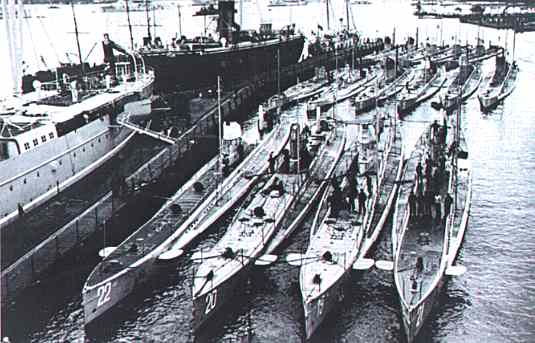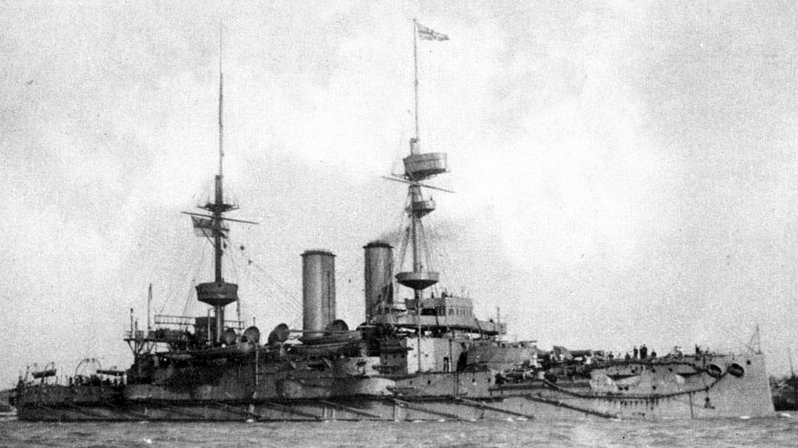 |
 |
 |
 |
 |
 |
 |
 |
 |
 |
 |
 |
 |
 |
 |
 |
 |
 |
 |
 |
 |
 |
|
 |
|
UNTERSEEBOOT:
The German Experience in Submarine Warfare |
|
|
|
|
|
First Battle for the Atlantic |
|
|
|
 |
|
|
When Germany's u-boats first took to sea on 1 August 1914, their future was still in doubt. The High Seas Fleet had twenty operational boats to screen the Russian fleet. On 4 August, Great Britian declared war on Germany. 6 August, a German submarine flotilla was ordered into combat for the first time. It was sortied to attack the British Grand Fleet off the Scottish coast in Scapa Flow.
Two would never arrive due to mechanical failure, including the afore mentioned U-9. One would mysteriously disappear, as submarines were to develop a habit of doing. When U-15 |
|
|
|
|
|
|
U-Boats in port, May 1914 |
|
|
|
|
|
started its attack run it was rammed and sunk by the light cruiser HMS BIRMINGHAM in the North Sea. Not exactly an auspicious beginning. But the spectacular successes of September would build up to an escalation of force between the two great navies.
On 1 January 1915, U-24 sank the 15,000 ton battleship HMS FORMIDABLE. Great Britain had declared a blockade of Germany, assuming absolute control of the European coast. On 18 February, Germany declared the waters off the British coast a war zone. In it they declared "unrestricted submarine warfare". The "Huns" had arrived at sea and the age of maritime chivalry came to a screeching halt. |
|
|
The Kaiser offered no quarter for civilians. He offered no guarantee of safe conduct for the vessels of neutral nations. If you were there you were subject to attack.
As was maritime law, unarmed vessels were to be given fair warning and the crew off-loaded before their ship could be sunk. The submarine afforded no such luxury as room for survivors. Germany was drawing a line in history daring any nation to cross. Cross it, and the blood was on their hands...not Germany's. Or so the reasoning was. Germany would soon be taken at her word. |
|
|
 |
|
|
|
HMS FORMIDABLE |
|
|
|
RMS LUSITANIA was cruising the Irish Sea on 7 May 1915 when the 30,000 ton passenger liner was rocked with a spectacular explosion. U-20 had fired a single torpedo into her side. It is barley disputed that she had war materiel onboard. But she also had 1,200 men, women and children aboard, including 128 Americans.
The High Seas Fleet justified the action by noting that LUSITANIA was registered in the British Reserve Fleet. Germany also reiterated their "warning" of what could happen within their declared war zone. |
|
|
|
 |
|
 |
|
|
 |
|


